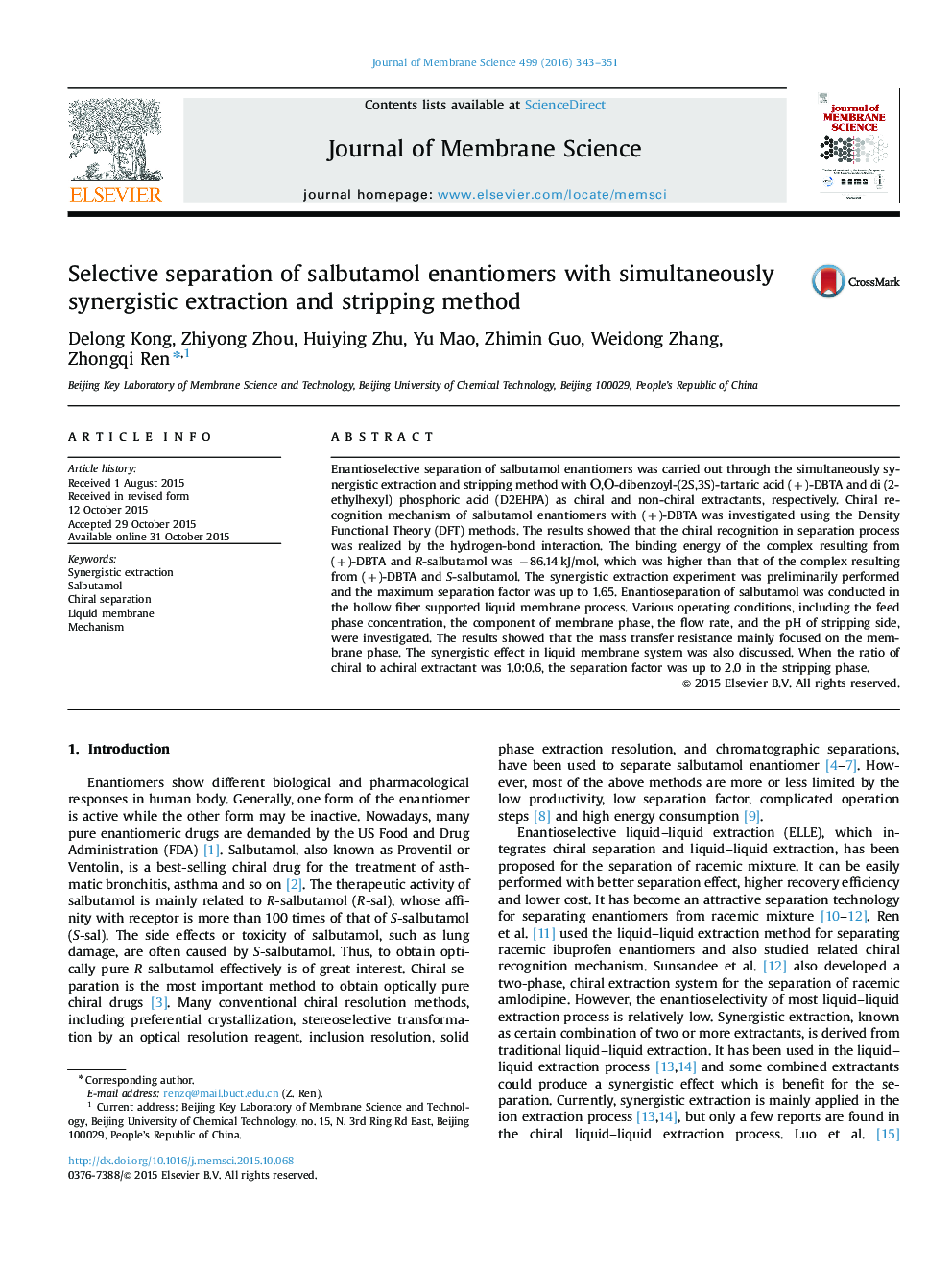| Article ID | Journal | Published Year | Pages | File Type |
|---|---|---|---|---|
| 632616 | Journal of Membrane Science | 2016 | 9 Pages |
•Separation of salbutamol enantiomers with synergistic extraction and stripping method.•The maximum separation factor was up to 2.0 with supported liquid membrane process.•Binding energy obtained by the DFT method was used for exploring recognition mechanism.•Chiral recognition in separation process was realized by hydrogen-bond interaction.
Enantioselective separation of salbutamol enantiomers was carried out through the simultaneously synergistic extraction and stripping method with Ο,Ο-dibenzoyl-(2S,3S)-tartaric acid (+)-DBTA and di (2-ethylhexyl) phosphoric acid (D2EHPA) as chiral and non-chiral extractants, respectively. Chiral recognition mechanism of salbutamol enantiomers with (+)-DBTA was investigated using the Density Functional Theory (DFT) methods. The results showed that the chiral recognition in separation process was realized by the hydrogen-bond interaction. The binding energy of the complex resulting from (+)-DBTA and R-salbutamol was −86.14 kJ/mol, which was higher than that of the complex resulting from (+)-DBTA and S-salbutamol. The synergistic extraction experiment was preliminarily performed and the maximum separation factor was up to 1.65. Enantioseparation of salbutamol was conducted in the hollow fiber supported liquid membrane process. Various operating conditions, including the feed phase concentration, the component of membrane phase, the flow rate, and the pH of stripping side, were investigated. The results showed that the mass transfer resistance mainly focused on the membrane phase. The synergistic effect in liquid membrane system was also discussed. When the ratio of chiral to achiral extractant was 1.0:0.6, the separation factor was up to 2.0 in the stripping phase.
Graphical abstractFigure optionsDownload full-size imageDownload high-quality image (193 K)Download as PowerPoint slide
